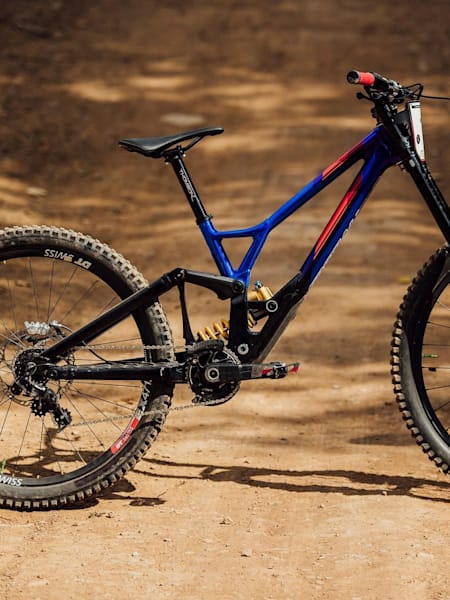Bike
Whether you've just torqued up the very last bolt on a brand-new bike or have a well-seasoned machine in need of some TLC, you don't have to spend a fortune to dramatically improve its performance.
Of course, you could invest thousands in the latest suspension tech, but wouldn't it be more fun to do a few more cost-effective mods and book a riding holiday with the change? Of course it would. Here then are our top five price-versus-performance MTB upgrades:
1. Grips
Your grips account for two out of the five contact points with your bike and are perhaps the most cost-effective. You can choose slide-on or lock-on grips. You can still get high quality slide-ons (which will need attaching with an adhesive), but lock-ons (which tighten into place with the turn of a bolt) are now the most prevalent.
Fresh grips provide a surprising new lease of life to just about any bike. It's not just a burst of colour either – they offer up renewed adhesion, tactility and confidence.
2. Tubeless set-up
There has never been a better time to 'invest' in a new trail/enduro MTB – the price-to-performance curve has never looked better for buyers. But there are a couple of regular corners that brands scrimp slightly on in order to keep costs down. One of the most popular is to spec 'tubeless-ready' rims and tyres, but with inner tubes.
In actual fact, it's pretty understandable and not too big a financial outlay to sort. Now, fitting tubeless tyres can be notoriously tricky, but the equipment needed to do it is easy to acquire (hassle some mates who may have spares before opening your wallet).
Full kits (comprising of fluid, tape and valves) are available to buy online and will dramatically improve your ride. The big one is obviously not having to fix punctures, but you'll also be able to run much lower tyre pressures and to take advantage of bolstered grip levels.
3. Handlebars
The effect that the humble handlestick can have on your bike is easy to underestimate. They're a simple component consisting of a single tube of either alloy or carbon fibre with a rise in the centre and two distinct bends – back and up sweep.
If you fork out for the more expensive carbon fibre option then you can obviously expect to pay more and save some weight. If that's your preferred option then bars really do represent perhaps the most cost-effective mod in terms of saving weight.
New bars can alter your position on the bike and improve it. Width is key when it comes to handlebars - go for 800mm wide as this gives you the opportunity to trim them to fit.
4. Front tyre
There is a school of thought that says that it really doesn't matter what your back wheel does. It can break away, arc round and threaten to overtake you, but if your front contact patch stays stuck then nine times out of ten you'll ride it out.
It's another area of new bikes that can usually be improved upon. Yes, your shiny new two-wheeler may come with the right brand and right model of tyre, but the compound and casing may still be found wanting.
Tyres haven't become any cheaper over the last few years, but upgrading to pro-level rubber is one of the biggest improvements that you can make to a bike. The front tyre does the steering and as long as it's gripping, you're in control.
5. Brake pads
There are two types of bikes in the world – bikes with new brake pads and bikes that need new brake pads.
Brake pads have a hard life. The tiny pieces of material have to deal with a lot of heat stress and harsh operating environments. Upgrading your brake pads is a fairly cheap and simple way to improve your bike.
Brakes are vital in terms of slowing you down and balancing grip levels and weight transfers. Experimenting with different compounds can not only slash your stopping distance, but also improve feel and confidence when on the anchors.











